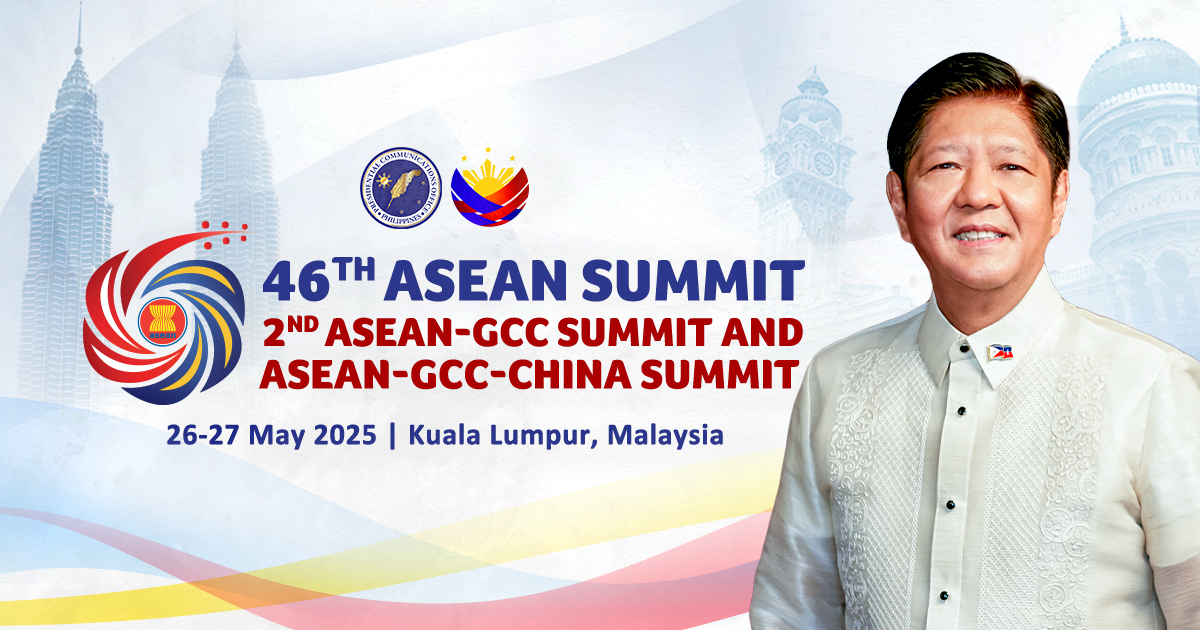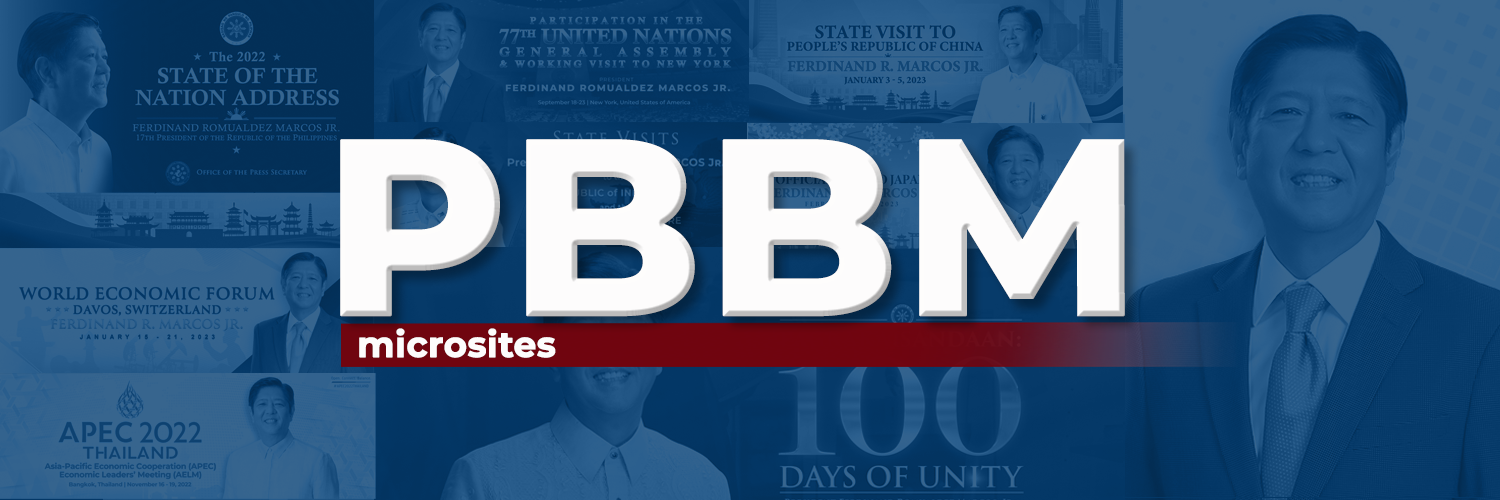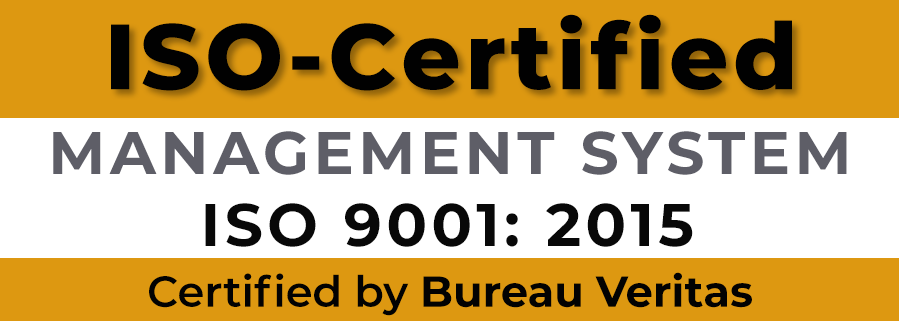September 11, 2015 – News Releases
 |
| 11 September 2015 |
|
APEC News Releases
|
|
|
| APEC members must address inefficiency to ensure better investment climate |
| (LAPU-LAPU CITY, Cebu) APEC member economies must improve or reduce the efficiency gap in their budgeting process to be able to strengthen investments in their respective economies, an official from the International Monetary Fund said on Thursday.
Sanjeev Gupta, the Acting Director for the Fiscal Affairs Department of the IMF was among the participants in the fiscal reforms and transparency meeting here in Lapu-Lapu City on Thursday. The discussions focused on two issues: ensuring transparency of budget operations of the governments and pushing for infrastructure developments by improving efficiency in public investments. These two issues are interrelated, Gupta said adding the background of the discussions focused on the region’s experiences with financial crisis in the past. During those periods, a number of countries experienced unexpected increases in debt to GDP ratio, he said with debt increasing much larger than those countries anticipated. This happens because governments did not fully report deficits arising from public private partnerships, (PPPs) and the operations of small and medium enterprises (SMEs) as well as building up some expenditure areas and the emergence of some large contingent liabilities. As a response, Gupta said the IMF revived its code of fiscal transparency at the height of those developments and introduced a new instrument called Fiscal Transparency Evaluation. “We have done 13 evaluations including three in APEC economies and the reports are published and are available in IMF’s external website,” he said. There are five key lessons that came out of those evaluations so far, he noted. One lesson is that countries often report much less of their fiscal operations of the public sector than they should. More than 20 percent of the spending has not been reported in many of the countries, Gupta said. Second, there are major gaps in the balance sheets and that they don’t fully report all the liabilities as well as the full extent of the research. Another lesson is that countries make very optimistic fiscal forecast for the medium term, which means that their medium term budgeting is not very credible, Gupta explained. “They are generally very optimistic about the evolution of spending, understating the spending plans going forward,” he said. There is also a large contingent liabilities such as those arising from PPPs, pensions and the guarantees that the government actually provides that are not reported in the accounts And finally there is the issue of lack of transparency in some of the project operation systems that appear on public investment, he said. These issues give rise to the efficiency of public investment processes. Gupta said that after analyzing the data of those countries, they found that roughly one third of the investment potential impact is being lost through inefficiencies. “So in other words if you are spending a dollar you are losing roughly one third of that money through inefficient investment,” he noted. “If we were to strengthen the investment processes, then one can improve or reduce this efficiency gap that we’ve talked about,” he said. For this purpose, Gupta said they introduced a new tool called public investment assessment to help countries deal with the weaknesses in investment in infrastructure. The IMF carried out assessment in about 40 countries on which 11 are APEC economies. In the case of APEC economies they lie between the advanced economies and emerging economies so their deficiencies are not as bad as those of emerging economies as a whole, according to Gupta. But still there are some weaknesses, which can be dealt with and pertain mainly to one of the particular phases of investment, which is the planning stage. Gupta added that strengthening some of the institutions that he mentioned can help APEC economies to achieve constructive pillar, which is contained in the Cebu Action Plan. APEC finance ministers are expected to sign the CAP on Friday, after hammering out the regional roadmap for three days. PND (as) |
|
|
| Financial expert expects APEC member economies to embrace Cebu Action Plan |
| (LAPU-LAPU CITY, Cebu) A financial expert on Thursday predicted that member economies of the Asia-Pacific Economic Cooperation (APEC) would adopt the Cebu Action Plan (CAP) because it will boost growth and improve efficiency in government spending.
As finance ministers and representatives of the private sector hammered the CAP for signing on Friday, issues on the readiness of APEC members to adopt short-term deliverables were raised. Although the Cebu Action Plan is not mandatory, APEC members will implement it because it is good for them, said Sanjeev Gupta, Acting Director of the Fiscal Affairs Department of the International Monetary Fund (IMF). Gupta said that in the current global environment, growth rates in the emerging markets are slowing down and world economy has not picked up after the financial crisis a few years ago. “Clearly, it is in the interest of all the economies to implement these reforms because they would be good for growth, the reforms are good at generating more revenue, and improving the efficiency in spending,” he said. “And without any pressure, they would implement CAP because in the end, it would generate some positive outcomes.” The IMF official also noted that the action plan is a way of presenting a path for governments to pursue different policies, which would improve the efficiency of spending. There were a number of ideas that were presented and discussed during Thursday’s meeting on the CAP, which will go a long way in meeting its intended goals, he said. “For example, if one were to focus on the efficiency of public investment and you were to focus on strengthening some of the key weaknesses, which have been identified for some of the APEC economies, this would lead to an improvement of the efficiency of spending,” he added. The CAP, a development roadmap drafted by the Philippines, will be formally launched on Friday, following a series of meetings and workshops involving senior officials of finance ministries across the Asia-Pacific region. Financial integration, fiscal reforms and transparency, financial resilience, and infrastructure development and financing are the four pillars of the Cebu Action Plan. PND (as) |
|
|
| Financial resilience needed to counter ill effects of climate change, says World Bank official |
| (LAPU-LAPU CITY, Cebu) Volatile weather patterns that have a devastating impact on Asia-Pacific economies will be the new norm and members of the Asia-Pacific Economic Cooperation (APEC) must build financial resilience as a countermeasure, a World Bank official said on Thursday.
World Bank Vice President and special envoy for climate change, Rachel Kyte, said APEC economies must build resilience the way they invest in infrastructure development and other projects to support growth and prosperity in the region. Even with aggressive agreements to counter climate change, such as the recent initiative in France, economies need to invest in resilience in the years to come, Kyte said during a press conference here on Thursday. To improve financial resilience, she said, APEC members should climate-proof their development spending using international development assistance. “This means understanding risks from disasters, making sure that their development projects and infrastructure that can be built, can withstand a new normal of volatile weather,” Kyte said. She further pointed out that APEC economies must understand that in some cases, the cost of resilience is going to increase the cost of development. Despite the cost however, there are benefits for APEC economies if they adopt such work plans, she said. Kyte noted that scientific evidence shows that investinig in resilience is going to produce a good return of investment because simply building infrastructure based on old standards will prove to be ineffective in terms of jobs, economic growth and prosperity. Investments from both the public and private sectors must pursue development spending, taking into account resilience, whether it be in agriculture, to ansport infrastructure. “They need to better understand the risks from changing weather patterns and from climate change and disaster risks,” she said. Putting numbers in these issues, Kyte cited that in the past four decades, climate and weather-related disasters have increased nearly fivefold and economic losses have spiralled from about $150 billion in the 1970s to $850 billion in the last decade. As the world advances, with more infrastructure being built and cities becoming more populous, communities become more vulnerable to increased climate-induced weather disasters, she said. East Asia and the Pacific were hardest hit between 2000 and 2011. More than 1.6 billion people were affected by disasters and the region sustained $300 billion in losses, accounting for more than 61 percent of the world’s total losses. Kyte said they expect those numbers to continue to increase. “It is important for us in the World Bank that we are here and the Philippines, as you know, has been at the forefront of experimentation in finding ways to build its own financial resilience, contingent credit facilities, and industry risk assessments,” she said. The World Bank has pioneered these initiatives in the country with the help of the Philippine government. “We are now trying to look at building a much more robust, comprehensive financial resilience system that would offer insurance and risk transfer at the national government, local government unit and individual household level,” she said. Kyte said she is glad that in the Cebu Action Plan, the Philippine government has put the issue of resilience at the heart of the challenge that APEC economies face. After three days of intense deliberations here, APEC finance ministers are slated to approve on Friday the Cebu Action Plan, which will become the region’s future roadmap. PND (as) |
|
|
| President Aquino graces Pacific Economic Cooperation Council general meeting |
| President Benigno S. Aquino III on Friday welcomed the delegates attending the 23rd Pacific Economic Cooperation Council (PECC) general meeting, which the Philippines is hosting for the second time since 1999. Speaking before business, government and civil society leaders from the Asia-Pacific region, President Aquino underscored the role of the Filipino people in the country’s growing economy.
“They are our Bosses, and we see them as our most vital partners in growing the economy,” the President said in his speech during the opening ceremony of the three-day forum, which carries the theme “Growth Engines for the 21st Century: Balanced, Inclusive and Sustainable Growth”, at the Sofitel Philippine Plaza Hotel in Pasay City. Sharing the Philippine experience in pursuing inclusive growth, the President noted that many tend to think of the economy as the only “growth engine”, the focus being on economic growth, hoping that its benefits would trickle down to the people. “My administration views it differently. The Filipino people are front and center in our governance agenda. Over the years, they have proven to be our country’s greatest resource — from the time they rose up against a dictator to reclaim democracy, to the time they voted for meaningful change in 2010, and even to the present day, as they fuel our resurgent economy,” he added. Inclusive growth fosters stability, which is necessary for continued growth, he said, explaining that capacitating the people means empowering them to take advantage of opportunities that arise, and they in turn gain the ability to make greater contributions to both government and society-at-large, helping foster an even more inclusive economy. “That is why we have made, and continue to make, massive investments into our countrymen,” said the President, citing the Conditional Cash Transfer (CCT) Program, the implementation of the K to 12 educational system, and the programs of the Technical Education and Skills Development Authority as among the country’s investments in its people. “As we have invested in the Filipino people these past few years, so too have we been hard at work to ensure that these investments pay off — that the Philippines becomes a true regime of opportunities,” he said. From holding the corrupt accountable, to plugging leaks and holes in the system, to exercising fiscal prudence, systematic reform has been implemented to level the playing field and create an attractive climate for business, he said. “Transparency and accountability are no longer just ideals; they are realities in the Philippines. The sea change that has swept our country has gained the administration the confidence of the world,” the Chief Executive said. He reported that the Philippines’ competitiveness indices have climbed “at a tremendous pace”, and that the country has achieved investment grade – and is continuing to receive upgrades – from the three major credit ratings agencies. The Information Technology-Business Process Management (IT-BPM) sector currently employs more then a million individuals and earns nearly $19 billion in revenues, while manufacturing has rebounded completely, growing by 8 percent from 2010 to 2014, he said. In 2014, foreign direct investments were at “an all-time high” at $6.2 billion, while domestic investments totaled P2.09 trillion from the third quarter of 2010 to the last quarter of 2014, compared to only P1.24 trillion from the first quarter of 2003 to the second quarter of 2010. “It goes without saying: Everyone, across the entire spectrum of society, is fully and completely engaged in growth—and we want to accelerate this momentum. Government is exerting the maximum effort to further engender an atmosphere conducive to business, down to our communities,” President Aquino said, referring to government efforts to ensure that micro, small, and medium enterprises (MSMEs) reach their full potential. The SME Roving Academy, he said, has helped more than 85,000 potential and established Filipino entrepreneurs by training them in business planning, financial management, and product pricing and costing. He announced that by the end of the year, 100 Go Negosyo, or business centers will be put up across the country. “What our government has done over the last few years has been to stimulate a virtuous cycle of empowerment, where the growth of business, industry, and the wider economy is spurred by the participation of the dynamic, innovative, and hardworking Filipino people. At every step of the way, our government is there to provide support. At every step of the way—whether we are studying the plans for a new bridge, or evaluating fiscal policy—we have always asked ourselves, ‘How does this redound to the benefit of our countrymen?’,” he said, adding that the success of this strategy is proof that economic progress is inseparable from the progress of the people. “Good governance works. Reform works. Even more encouraging is the fact that transformation has not just taken place in our institutions and our economy; it has taken place in the mindset of Filipinos. We see today a people who have felt the effects of good governance—and who will refuse to accept anything less. My countrymen will continue to demand integrity, accountability, and sustainable, inclusive growth even after I have stepped down from office. They will demand the continuity of the successes we have reaped,” the President said. Also present during the opening were PECC Chairperson Ambassador Antonio Basilio, PECC co-chairpersons Jusuf Wanandi and Donald Campbell, Trade and Industry Secretary Gregory Domingo, and National Economic and Development Authority Secretary Arsenio Balisacan. The PECC meeting will tackle the future and impact on inclusive regional economic integration of mega-regional trade pacts, including the ASEAN Economic Community and the Trans-Pacific Partnership, sustainable investments in metals and mining sector, integrating small and medium enterprises and peripheral cities to global commerce and value chains, the internet economy, the role of micro and social enterprises in promoting inclusive growth, and the need to build resilient societies in response to increasing risks and vulnerabilities from severe natural disasters. Recommendations from the PECC forum will feed into the Asia-Pacific Economic Cooperation Leaders’ meeting in November. PND (jm) |
|
|
| World Bank official says quality education, social protection needed to stem inequality in Asia Pacific |
| (LAPU-LAPU CITY, Cebu) Asia Pacific countries should invest in education and social protection to address inequality within their economies and this includes the Philippines, a World Bank official said on Friday.
In his message during the APEC Finance Ministers’ Meeting here, World Bank Vice President for East Asia and the Pacific, Axel van Trotsenburg, said most poor households rely on labor as their only source of income. Making labor productive through quality education and skills trainings is crucial to achieving inclusive growth in the region, he said. “Primary and secondary education systems should increasingly focus on quality teaching and better learning outcomes by strengthening the autonomy and accountability of education institutions,” van Trotsenburg stated during the session on “Global Economic and Financial Outlook, Growing Inequality and Regional Connectivity.” “In addition, there remains significant scope to promote wider and more equal access to higher education among the poor.” At the same time, van Trotsenburg advocated the expansion of social protection among APEC economies, noting the limited coverage of such schemes as health insurance, unemployment insurance, and pension system across much of middle-income East Asia. Members of the APEC must consider introducing or expanding well-targeted conditional cash transfer (CCT) programs to provide direct support to those who are at the margins of society, he said. Citing the experiences of the Philippines, Mexico, Peru, and Chile, he said that CCT programs help boost school attendance, preventive health care, and nutrition among the poor and vulnerable, significantly improving their lives. He cited the rigorous selection of recipients based on geographical and socioeconomic factors, constant monitoring and evaluation, and paying recipients directly as the key features of the social safety net program. Despite the rapid growth that lifted millions in East Asia out of poverty, van Trotsenburg said there are still challenges ahead. He pointed out that 40 percent of the region’s population — or almost 800 million – continue to live on less than $3 a day, in terms of purchasing power parity. “These people might fall right back into poverty if the global economy takes a turn for the worse, or if they face health, food price and other shocks,” he said. He urged the APEC economies to continue or accelerate reforms to sustain growth, which is critical to improving living standards, especially of those at the lower end of income distribution. There is a need for APEC members to boost investment in physical infrastructure that would help reduce production and transport costs, he added. Developing East Asia’s infrastructure investment is a big challenge, he said, noting that 142 million households still have no access to electricity while 600 million lack access to adequate sanitation. PND (as) |
|
|
| World Bank urges APEC economies to invest more in infrastructure |
| (MACTAN, Cebu) The World Bank (WB) is urging the 21 member economies of the Asia-Pacific Economic Cooperation (APEC) to invest more in infrastructure to sustain growth, in an effort to improve the living standards, especially of the region’s poor.
In a press briefing here Friday, WB Vice President for East Asia and the Pacific, Axel van Trotsenburg, underscored that governments in the region need to continue or accelerate economic reforms by boosting investments in physical infrastructure. “In this region, 142 million households still have no access to electricity while 600 million people lack access to adequate sanitation. It will be very important for greater investment to be accompanied by increases in efficiency of such expenditure,” he said. The infrastructure investment gap in the region remains huge at $1 trillion a year, van Trotsenburg said, noting that developing countries together are investing only half of this amount. Private sector participation in infrastructure in all these developing countries is less than $200 million, or less than 10 percent of the needed investment, he said. He thus emphasized the important role of public-private partnership (PPP) schemes and increased private sector involvement in infrastructure development. For one, he said, the International Finance Corp. and the Multilateral Investment Guarantee Agency of the WB Group intend to help build a stronger pipeline of bankable projects, and assist in the financing and execution of these projects. The World Bank created the Global Infrastructure Facility (GIF), a global open platform that facilitates the preparation and structuring of complex infrastructure PPPs to mobilize private sector and institutional investor capital. “We think we can play a lead role. Today in Asia, the WB is already investing only in the infrastructure area over $10 billion a year. We have an active portfolio of $60 billion in Asia only in infrastructure… We are set to step up our engagements in these areas,” van Trotsenburg further said. Accelerating infrastructure development and financing is among the four pillars of the Cebu Action Plan (CAP), a 20-year development roadmap for the Asia-Pacific region, which APEC’s financial ministers are set to unveil on Friday. The roadmap’s other pillars are advancing fiscal reforms and transparency, promoting financial integration, and enhancing financial resiliency. PNA (ldv) |
|
|
| 5 reasons why top World Bank official gave PH ‘good job’ praise at APEC meet |
| (LAPU-LAPU CITY, Cebu) A top World Bank official on Friday gave the Philippines a pat on the back saying it has done a “good job” in five areas.
At a press briefing on the Asia-Pacific Economic Cooperation (APEC) Finance Ministers’ Meeting held here, Axel van Trotsenburg, World Bank Vice President for East Asia and the Pacific Region, on Friday said these areas are: 1. Management of people’s money “In the APEC context, best practices include fiscal transparency. The Philippines has been a leader in this,” van Trotsenburg said. 2. Getting more private companies in public infrastructure development “In many economies, public sector dominates infrastructure. And they struggle to get the private sector to participate,” said van Trotsenburg. But, for him, the Philippines is a model economy for successfully implementing private business ventures. “They can look at the Philippines’ public-private partnerships,” he noted. “In East Asia, the Philippines has more private sector participation.” 3. Disaster-risk reduction and management Due to experiences such as the super typhoon Yolanda (international name Haiyan) in 2013, the Philippines was able to find new ways to “build back better.” 4. Support for the poor In terms of providing support for the poor, van Trotsenburg said the Philippines benefited from the experience of Mexico, Peru, and Colombia on the conditional cash transfer (CCT) program. “Programs (such as the CCT) have shown…how to ease the situation of inequality,” he stressed. “To fight exclusion, you have to ensure that kids in disadvantaged situations have a fighting chance to succeed.” In the Philippines and other Latin American economies, said van Trotsenburg, CCT has been scaled up quickly. “There is a lot of transparency on this and active empowerment at the local level,” he said. “Conditional cash transfer programs have proven more successful in this.” 5. Overall economic management On the Philippines’ overall economic management, van Trotsenburg said, “authorities have done a good job.” “The Philippines allowed for prudent macroeconomic policies that have lowered the inflation rate,” he pointed out. “World economy has varying factors that influence economies positively or negatively. The Philippines has done relatively well.” But the Philippines is not the only economy doing a good job addressing the “growth agenda.” East Asia has been a world leader of economic growth. However, van Trotsenburg said, although an important precondition, simple growth is still not enough because it also has to be inclusive and sustainable. “While poverty reduction in the region has been unprecedented, a lot of challenges remain,” he said. With 100 million people in East Asia still living in extreme poverty, he said the real challenge is to make sure that these people also benefit from the growth. “The World Bank has emphasized that growth benefits all, and in that context has emphasized that policy matters,” van Trotsenburg said. According to him, it is very important for World Bank to join the APEC meetings hosted by the Philippines this year. “The APEC setting is unique because it unites East Asia with key countries in the West,” he said. “As it unites Asia and the West, APEC allows for powerful exchange of knowledge and experiences across hemispheres.” (acg) |
|
|
| Successful implementation of Cebu Action Plan needs private sector participation, says Finance official |
| (LAPU-LAPU CITY, Cebu) Finance ministers of the Asia-Pacific Economic Cooperation (APEC) view the active participation of the private sector as key to the immediate adoption of the Cebu Action Plan, which was launched here on Friday.
Issues about how APEC members would implement the Cebu Action Plan in the short term were raised, considering the disparity of each member’s capabilities and readiness. “That is one of the reasons why we engaged the private sector in this whole process. As you know, a lot of reforms here, the proposals will require cooperation between the public and the private sectors,” Finance Secretary Cesar Purisima said. Secretary Purisima told reporters during a recent press conference that there were parallel sessions among APEC seniors officials, the deputies, and the ministers, while the private sector held its own session through the APEC Business Advisory Council (ABAC). He said that during their meetings, they had the opportunity to exchange ideas on different issues. “In fact, we already heard a lot of feedback that we can bring to our respective countries, (so) that we can be more responsive to the needs of business and bring to life the various pillars of the Cebu Action Plan,” he said. The ministers and private stakeholders have discussed how they can have more inclusive financing across the region, Purisima said, adding that he had heard several suggestions that are very relevant to the Philippines. Citing an example, he said it was mentioned that the risk for lending to small and medium enterprises (SME) is higher than commercial lending. He said they will sit down with the regulators to see if there is room for adjustment for that kind of lending. There was also a suggestion for the government to facilitate the registration process or the gathering of documents for micro borrowers so they could borrow from micro finance institutions, he noted. “Again, that is something that we will discuss and we will implement. This will be a work in progress. This will be a journey. But the important thing is that we do not lose sight of the vision and the benefit to us of achieving that vision,” he said. The APEC ministers launched here on Friday the Cebu Action Plan aimed at achieving financial resiliency and making the region more progressive despite current challenges. The plan will be endorsed to the economic leaders of the APEC this November in Manila. PND (as) |
|
|



















